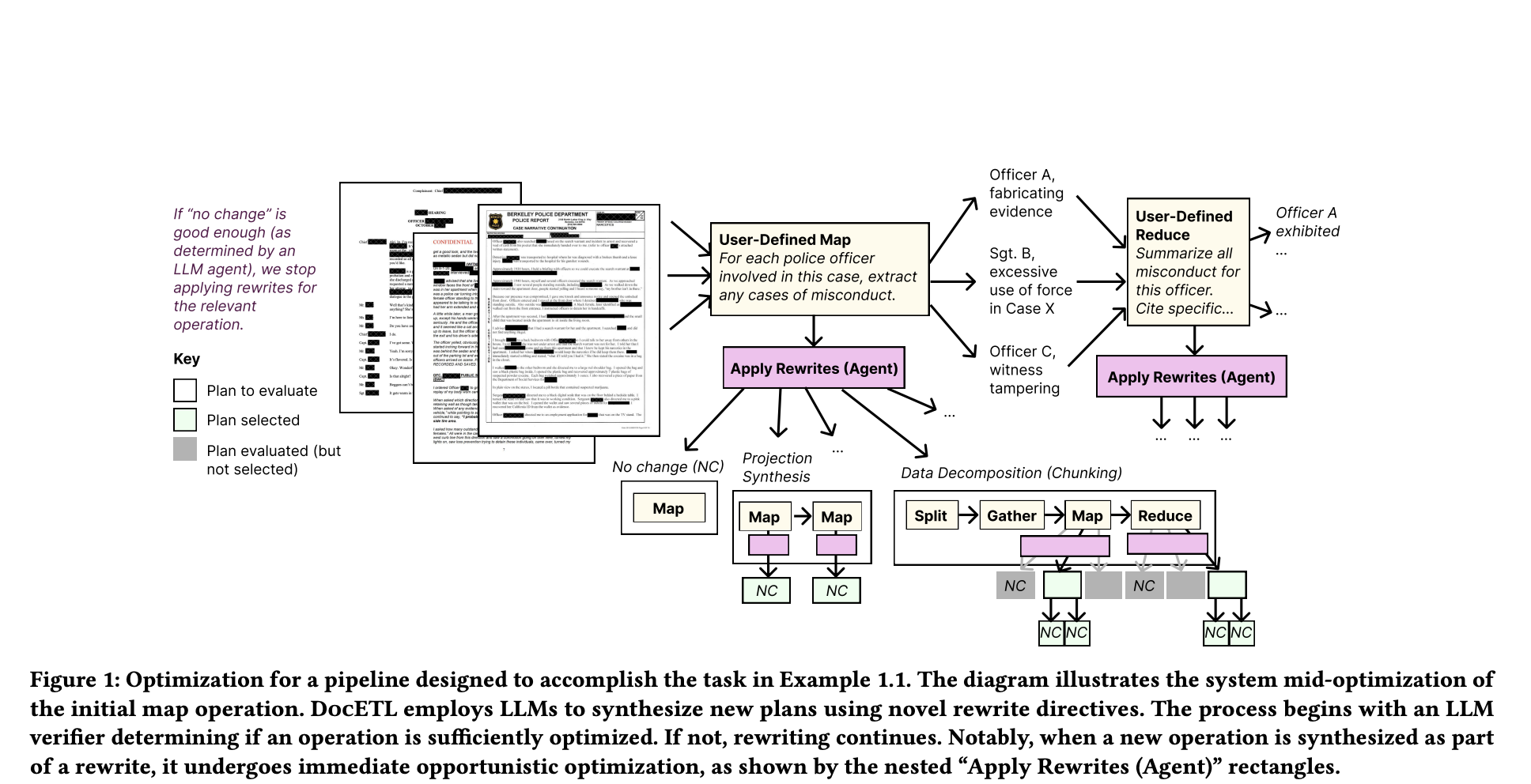
Understanding the Challenges with Large Language Models (LLMs)
LLMs are popular in data management, particularly for tasks like data integration, database tuning, query optimization, and data cleaning. However, they struggle with analyzing complex, unstructured data like lengthy documents. Recent tools aimed at using LLMs for document processing often prioritize cost over accuracy, leading to issues with precision in complex tasks.
The Issue with Police Misconduct Identification (PMI)
Journalists analyzing police records to identify officer misconduct face difficulties due to the complexity of these documents. Current methods typically use single-step operations, which can miss critical details or produce irrelevant information due to document size limitations.
Introducing DocETL: A New Approach
DocETL is a revolutionary system designed to enhance the processing of complex documents by optimizing how they are analyzed. It allows users to create processing pipelines easily and automatically adjusts for efficiency.
Key Features of DocETL
- Declarative Interface: Users can define their document processing steps with ease.
- Agent-Based Optimization: It uses specialized agents for better plan evaluation and validation.
- Enhanced Output Quality: DocETL significantly improves accuracy in analyzing unstructured documents.
Proven Results
DocETL was tested using a dataset of 227 California police documents, achieving high accuracy ratings. The evaluation showed it produces results that are 1.34 times more accurate than traditional methods.
Why DocETL Matters
DocETL addresses the major challenges faced in document processing, making it a valuable tool for researchers and professionals alike. It outperforms other LLM techniques, enhancing future developments in this area.
Get Involved and Learn More
Explore the research paper and GitHub for deeper insights. Stay connected through our social media channels and join our community for the latest updates. If you’re interested in enhancing your company with AI, consider following our strategic steps:
- Identify Automation Opportunities: Pinpoint areas in customer interactions that could benefit from AI.
- Define KPIs: Set measurable goals for AI projects.
- Select the Right AI Solution: Choose tools that fit your requirements and can be customized.
- Gradual Implementation: Start small, gather insights, and scale thoughtfully.
For more AI KPI management tips, contact us at hello@itinai.com. Join our Telegram and Twitter for ongoing updates.
Upcoming Webinar
Join us on Oct 29, 2024, for a live session on the best practices for serving fine-tuned models using the Predibase Inference Engine.


























